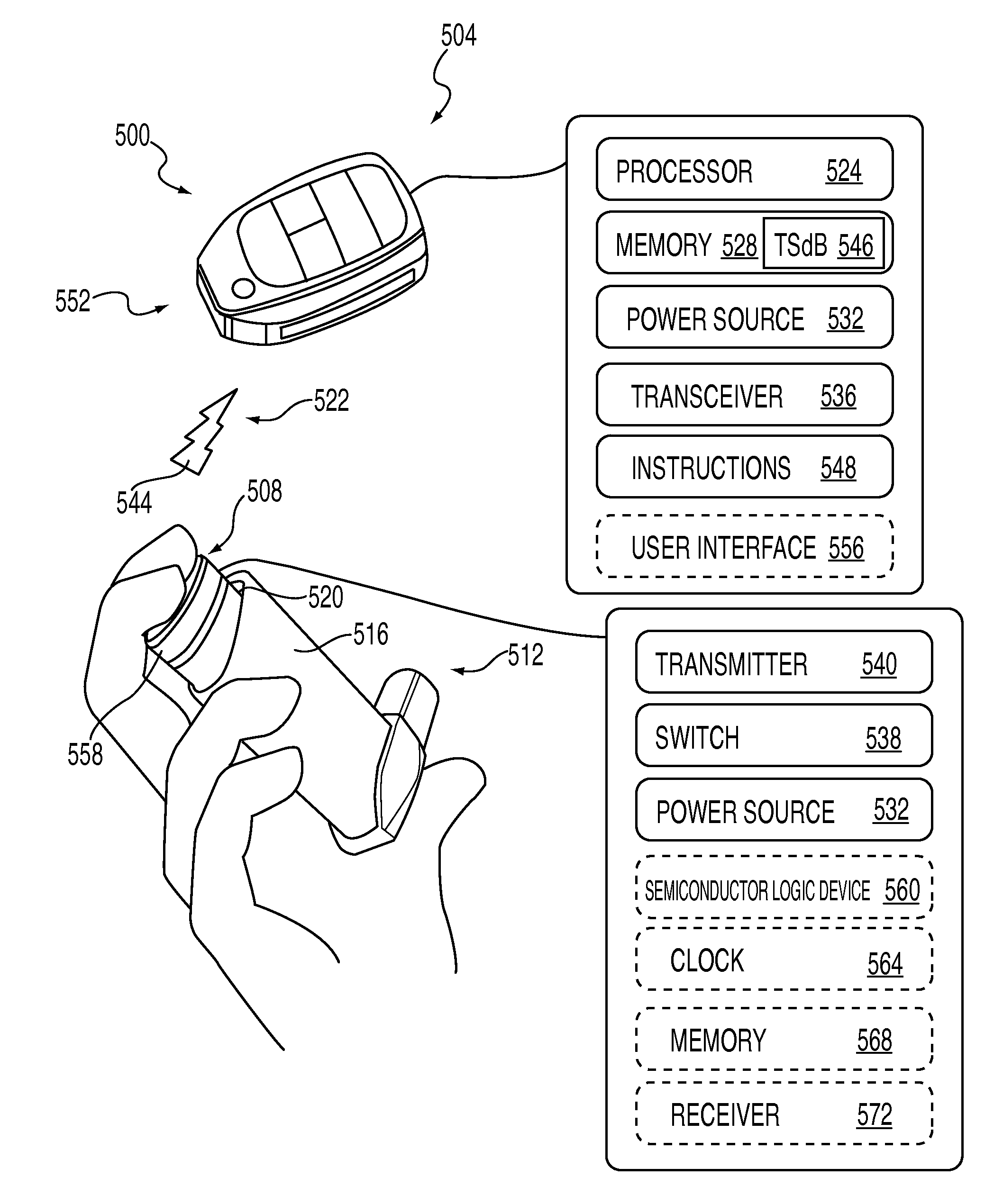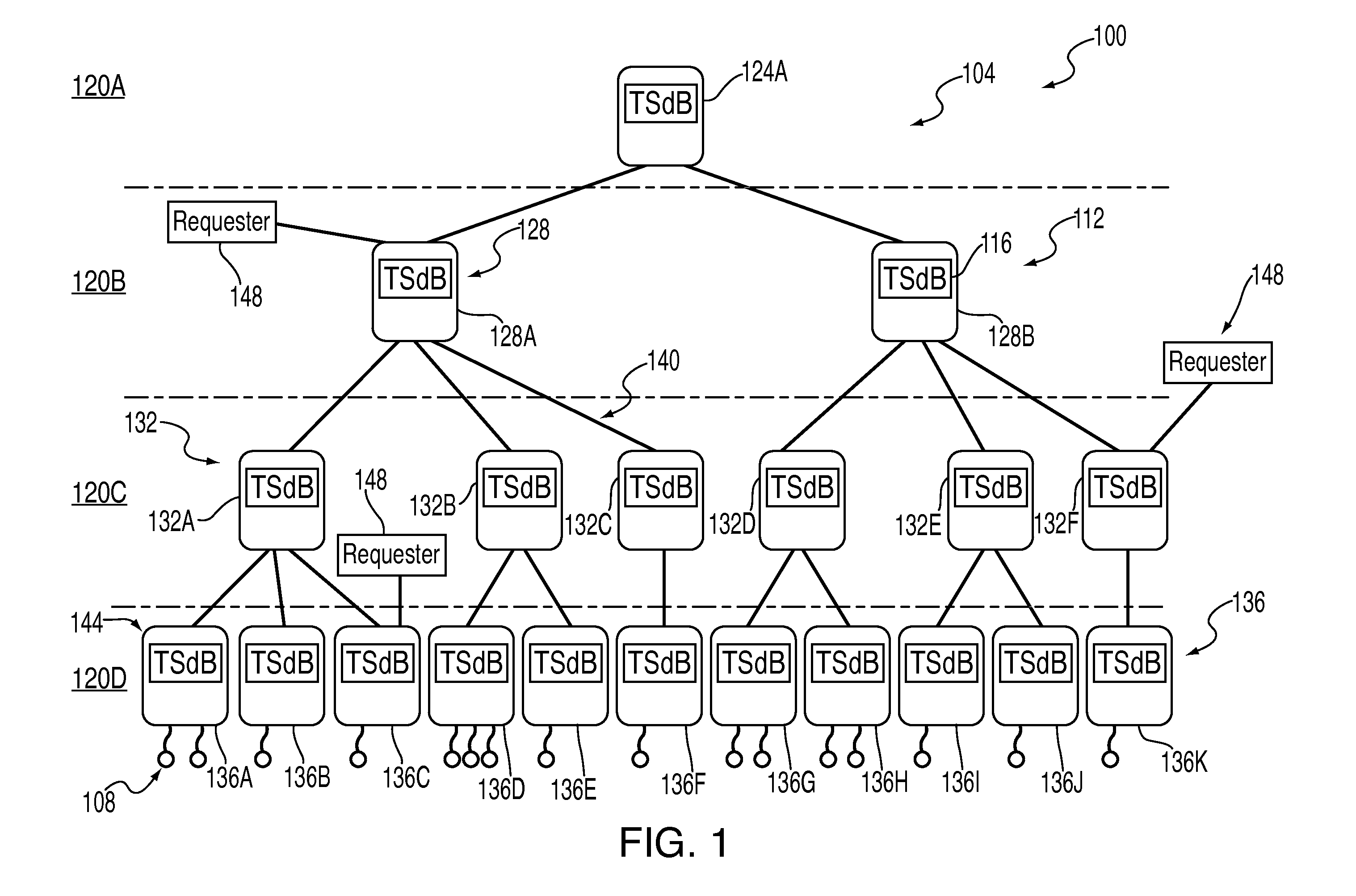Self-Similar Medical Communications System
a communication system and self-similar technology, applied in the field of medical monitoring systems, can solve the problems of inefficient access to data, multiple sensors, and one requestor, and achieve the effect of reducing the complexity and requirements of the system, reducing the efficiency of data access, and increasing the complexity and requirements
- Summary
- Abstract
- Description
- Claims
- Application Information
AI Technical Summary
Benefits of technology
Problems solved by technology
Method used
Image
Examples
Embodiment Construction
Referring now to the drawings, FIG. 1 illustrates an exemplary medical communications system 100 that implements a self-similar nodal network 104 to provide an efficient and highly scalable architecture for collecting, storing, transmitting, requesting, and retrieving various types of personal medical-related information concerning patients that utilize the system. This information is initially collected using one or more of various types of patient sensors 108, which include medical-regime-adherence sensors, physiological sensors, environmental sensors, and location sensors, that sense and / or measure various user actions and / or other things. It is noted that sensors 108 are denoted “patient” sensors to indicate that they are used to collect information relating to particular medical patients that are utilizing system 100. As will become apparent from reading this entire disclosure, a medical communications system of the present disclosure, such as system 100 of FIG. 1, can be used ...
PUM
 Login to View More
Login to View More Abstract
Description
Claims
Application Information
 Login to View More
Login to View More - Generate Ideas
- Intellectual Property
- Life Sciences
- Materials
- Tech Scout
- Unparalleled Data Quality
- Higher Quality Content
- 60% Fewer Hallucinations
Browse by: Latest US Patents, China's latest patents, Technical Efficacy Thesaurus, Application Domain, Technology Topic, Popular Technical Reports.
© 2025 PatSnap. All rights reserved.Legal|Privacy policy|Modern Slavery Act Transparency Statement|Sitemap|About US| Contact US: help@patsnap.com



